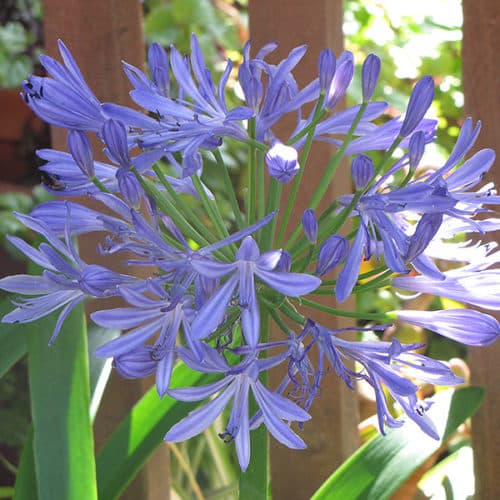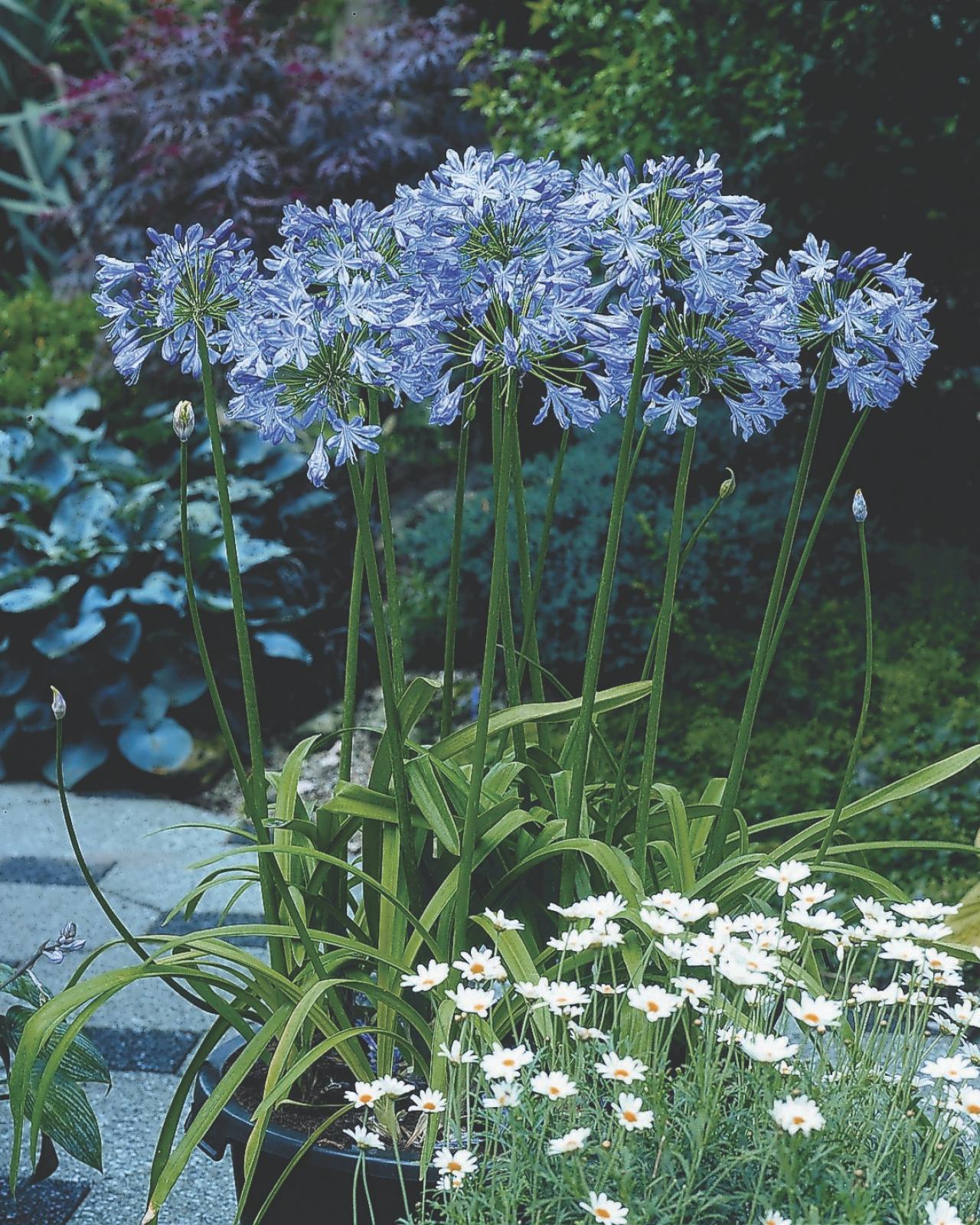Agapanthus Varieties: Picking the very best for Your Landscape
Agapanthus Varieties: Picking the very best for Your Landscape
Blog Article
Mastering the Art of Agapanthus Care: Necessary Actions for Healthy And Balanced Development and Lively Blossoms
In the realm of cultivation, the farming of agapanthus stands as a gratifying undertaking for those that seek to support these sophisticated flowering plants. With their striking blooms and graceful foliage, agapanthus has caught the focus of gardeners worldwide. Nonetheless, achieving optimum growth and lively blooms needs a nuanced approach that includes various crucial steps. From selecting the right selection to mastering pruning techniques, the trip in the direction of cultivating flourishing agapanthus plants is multifaceted and holds the key to opening the full capacity of these organic gems.

Picking the Right Agapanthus Variety

When choosing the ideal Agapanthus range for your garden, take into consideration variables such as climate viability, flower color, and development routine. In addition, think about the environment in your region to make certain the Agapanthus selection you choose can flourish in your particular conditions. Comprehending the development practice of different Agapanthus varieties is crucial for proper positioning within your garden.
Perfect Planting Conditions
Taking into consideration the optimal environmental demands is essential for effective Agapanthus growing. Agapanthus flourishes in well-draining soil with a somewhat acidic to neutral pH degree. When planting, select a place that receives full sunshine to partial color. In hotter environments, offering some mid-day color can avoid scorching of the leaves. Agapanthus plants are delicate to chilly temperatures and ought to be shielded from frost throughout winter season.
To make sure healthy development and lively blossoms, plant Agapanthus light bulbs at a depth of about 2-4 inches and space them 8-12 inches apart. Including natural matter, such as garden compost, to the soil can enhance water drainage and fertility, promoting robust origin development. Mulching around the base of the plants assists preserve moisture and suppresses weed development. Routine watering is important, especially throughout the expanding period, to maintain the soil regularly damp yet not waterlogged.
Watering and Fertilizing Tips
Keeping appropriate dampness levels and supplying vital nutrients are key aspects in the care routine for Agapanthus plants. When it comes to watering Agapanthus, it is crucial to strike an equilibrium. These plants prefer consistently wet soil but are prone to root rot if overwatered.
Fertilizing Agapanthus is necessary for promoting healthy and balanced Find Out More growth and respected flowers. Apply a well balanced fertilizer, such as a 10-10-10 formula, in the early springtime as brand-new growth emerges. Repeat this application every 6-8 weeks throughout the expanding period. Prevent extreme fertilizing, as it can lead to lavish foliage at the cost of blooms. Always comply with the supplier's instructions for appropriate dilution and application approaches. recommended you read By adhering to these watering and feeding tips, you can ensure your Agapanthus plants flourish and produce dynamic, resilient blossoms.
Pruning Strategies for Agapanthus
Trimming Agapanthus plants at the ideal times and with appropriate techniques is essential for maintaining their health and wellness and advertising optimum growth and flowering. The ideal time to trim Agapanthus remains in late winter months or very early spring prior to brand-new growth emerges. Begin by getting rid of any kind of yellowing or dead leaves near the base of the plant. Cut them as close to the ground as feasible without damaging the emerging shoots.
Deadheading spent blossoms can also redirect the plant's power right into creating more flowers instead than setting seeds. If you desire to collect seeds for breeding, leave some blossoms to dry and fully grown on the plant.
Keep in mind to use clean, sharp tools to make exact cuts and reduce the danger of presenting conditions. Agapanthus. Regular pruning will assist keep your Agapanthus looking cool and healthy while making sure a plentiful display of lovely blooms
Handling Typical Parasites and Diseases
After making sure correct trimming methods for Agapanthus, it is crucial to resolve usual bugs and diseases that can influence the health and wellness and vitality of these plants. One usual insect that influences Agapanthus is the Agapanthus gall midge.
In addition, Agapanthus plants can suffer from origin rot if they are grown in badly draining pipes dirt. By being vigilant and taking timely activity versus parasites and illness, you can assist your Agapanthus plants thrive and create dynamic blooms. Agapanthus.

Conclusion
In conclusion, mastering the art of agapanthus care includes selecting the ideal variety, providing ideal growing problems, correct watering and fertilizing, suitable trimming techniques, and attending to typical insects and diseases. By complying with these vital steps, you can guarantee healthy growth and vibrant blooms for your agapanthus plants. Keep in mind to on a regular basis keep track of and preserve your plants to promote their overall well-being and durability.
To guarantee healthy development and dynamic flowers, plant Agapanthus light bulbs at a depth of about 2-4 inches and area them 8-12 inches apart. By following these watering and fertilizing ideas, you can try this out guarantee your Agapanthus plants flourish and create lively, long-lasting blossoms.
One usual parasite that affects Agapanthus is the Agapanthus gall midget. Additionally, Agapanthus plants can endure from origin rot if they are planted in poorly draining soil. By complying with these essential actions, you can guarantee healthy and balanced development and vibrant flowers for your agapanthus plants.
Report this page